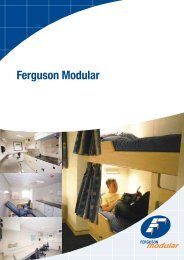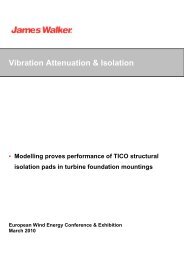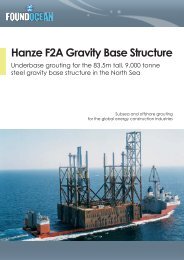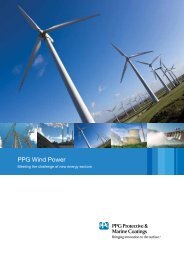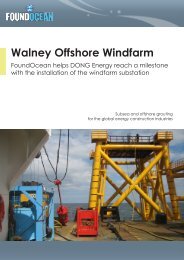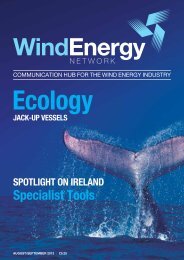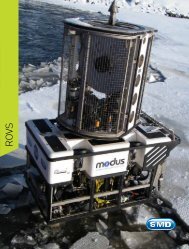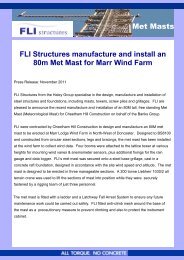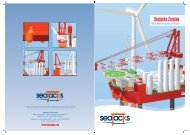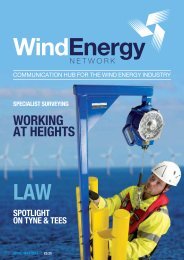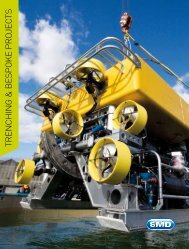UNEXPLODED ORDNANCE - Wind Energy Network
UNEXPLODED ORDNANCE - Wind Energy Network
UNEXPLODED ORDNANCE - Wind Energy Network
You also want an ePaper? Increase the reach of your titles
YUMPU automatically turns print PDFs into web optimized ePapers that Google loves.
Benefits of the Bow-Tie Method<br />
1. Logical, structured understanding<br />
Risk assessments can have a<br />
tendency to concentrate on the<br />
level of risk only, rather than<br />
considering all aspects of the<br />
management of risk. The structured<br />
approach of the bow-tie forces an<br />
assessment of how well all initial<br />
causes are being controlled and<br />
how well prepared the organisation is<br />
to recover, should things start to go<br />
wrong. This logical approach often<br />
identifies gaps and issues that are<br />
missed by other techniques.<br />
2. Clear communication and<br />
improved understanding<br />
By visually illustrating the hazard,<br />
its causes and consequences, and the<br />
controls to minimise the risk, the bowtie<br />
can be readily understood at<br />
all levels, from senior managers and<br />
operations personnel, to regulators<br />
and members of the public.<br />
3. Greater ownership<br />
Bow-tie workshops encourage<br />
participation and stimulate<br />
communication between key<br />
stakeholders, whether from the<br />
company, contractors or external<br />
parties, who all have a role to play in<br />
managing risk and yet may not be<br />
involved in more traditional techniques.<br />
When people feel involved they tend<br />
to ‘buy-in’ to the process. When<br />
action is taken based on what they<br />
say, people will take ownership. All<br />
of which lends itself to more effective<br />
risk management.<br />
4. Efficiency gains<br />
Bow-ties help identify where resources<br />
should be focused for risk reduction<br />
(i.e. prevention or mitigation), thus<br />
reducing the volume of safety<br />
analysis, leading to a potential<br />
reduction in unnecessary/lower<br />
importance barriers.<br />
5. ALARP demonstration<br />
Bow-ties are an effective tool for<br />
qualitative demonstration that hazards<br />
are being managed to a level which<br />
is As Low As Reasonably Practicable<br />
(ALARP). The bow-tie diagram<br />
clearly identifies all existing barriers in<br />
place to prevent realisation of a<br />
hazard, and prompts operators to ask<br />
“is there anything more we can<br />
reasonably do”<br />
6. “Future proof” risk management<br />
Unlike other risk assessment<br />
techniques, the bow-tie illustrates not<br />
only what controls are currently in<br />
place, but, through the use of critical<br />
tasks, why they will still be there<br />
tomorrow.<br />
56<br />
www.windenergynetwork.co.uk



